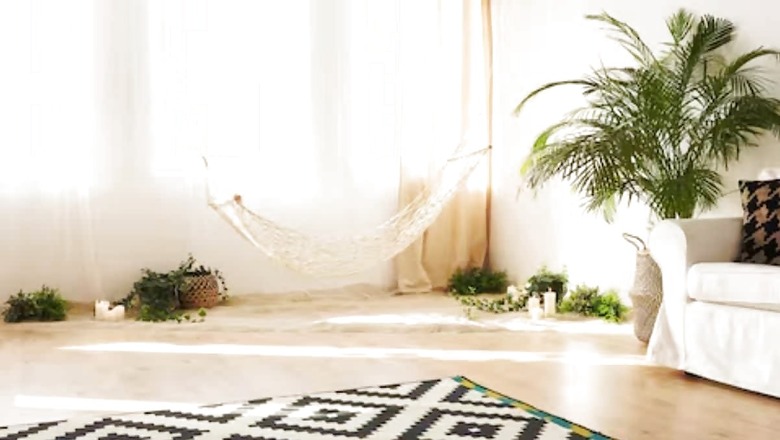
views
Japanese interior design techniques are making waves in the home design industry, offering a unique blend of simplicity, functionality, and beauty. These elements not only upgrade the aesthetic of spaces but also provide long-lasting benefits for homeowners and designers alike.
With insights from Tushar Joshi, Founder, Utkarsh Vastukarn and Nikta Mohan, Founder, Vilasa Luxury Living, we delve into how these techniques are reshaping the way we approach home interiors.
- Embracing MinimalismAccording to Tushar Joshi, minimalism is at the heart of Japanese design. By focusing on simplicity and decluttering, it creates a calm and serene environment. This approach emphasizes the idea that less is more, encouraging homeowners to strip away excess and focus on essentials. Minimalist interiors are timeless, allowing spaces to feel uncluttered and peaceful, no matter the era.
- Incorporating Natural MaterialsNatural materials such as wood, paper, and stone play a significant role in Japanese interiors. Joshi highlights how these materials add warmth and texture, creating a grounded, organic feel in homes. The integration of natural elements not only enhances the beauty of a space but also aligns with sustainable practices, offering a healthier, eco-friendly living environment.
- Sustainable Design and InnovationNikta Mohan underscores the importance of sustainability in Japanese interior design. From using eco-friendly materials to emphasizing energy efficiency, these techniques encourage minimal waste and mindful living. This focus on sustainability has made Japanese design highly relevant in the modern age, as the industry moves toward environmentally responsible choices. The multi-functional furniture and space-saving designs, like sliding doors, foster innovation, ensuring that every square inch is optimized.
- Attention to Detail and CraftsmanshipBoth Joshi and Mohan agree that Japanese interior design is known for its precision and craftsmanship. “The level of detail is impeccable,” says Joshi, noting that the emphasis on quality ensures that every design element, no matter how small, adds value to the overall space. Mohan adds that this meticulousness results in timeless designs that stand the test of time.
- Connection to Nature and WellnessA strong connection to nature is a defining element of Japanese interior design. Joshi explains that incorporating plants, natural light, and outdoor views creates a sense of harmony between the indoors and outdoors. This biophilic approach is not only aesthetically pleasing but also promotes wellness by fostering a calming environment. Mohan adds that prioritizing ventilation, air quality, and natural light in these spaces helps enhance both physical and mental well-being.
- Wabi-Sabi and Zen InfluenceJapanese interior design celebrates imperfection and simplicity through the concept of wabi-sabi. Joshi points out that embracing the beauty in imperfections creates a more relaxed, lived-in feel that resonates with modern homeowners seeking authenticity in their spaces. Meanwhile, Zen principles of mindfulness and simplicity influence design choices, encouraging a serene, balanced living environment.
- Flexibility and FunctionalityNikta Mohan emphasizes how Japanese design techniques provide solutions for smaller, multi-functional spaces. “Flexibility is key,” she notes, as the use of adaptable furniture and elements like tatami mats or shoji screens allows homeowners to maximize functionality. This focus on adaptability makes Japanese design especially appealing in urban environments where space is limited.
- Cultural Exchange and Aesthetic AppealJapanese interior design is not just influencing spaces in Japan but is also impacting Western design. Mohan highlights how the integration of new materials, techniques, and philosophies from Japanese design into Western homes fosters cultural exchange and innovation. The aesthetic appeal of Japanese design—rooted in minimalist beauty and intentional simplicity—adds a distinct, elegant charm to spaces.
- Increasing Customer SatisfactionThe thoughtful approach of Japanese interior design goes beyond aesthetics. Mohan explains that the industry is seeing increased customer satisfaction due to the wellness-focused, adaptable, and sustainable elements of these designs. Homeowners appreciate the mindful approach that prioritizes quality living, eco-friendliness, and longevity.
In summary, Japanese interior design techniques, with their emphasis on minimalism, sustainability, craftsmanship, and connection to nature, are profoundly upgrading the home design industry. Whether through creating spaces that foster mindfulness or offering innovative solutions for modern living, these techniques offer a blend of beauty, functionality, and sustainability that is both timeless and forward-thinking.















Comments
0 comment